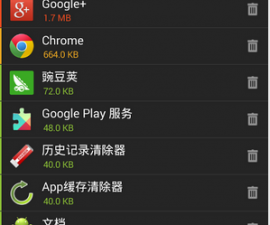Fixing Google Chrome Crash Issues on Mac OS X/MacOS Sierra. Google Chrome is likely the most popular web browser across all platforms, including Android, iOS, Windows, and MacOS. While it is a preferred choice for most average users, it may not be the top choice for computer enthusiasts. This is primarily due to its high resource usage, particularly in terms of RAM, which can slow down your computer. Additionally, Chrome tends to drain more battery power on laptops. Users on Mac OS X and MacOS Sierra may face more issues with Google Chrome compared to those on the Windows platform.
Users of Google Chrome on Mac OS X and MacOS Sierra may encounter various issues such as mouse freezing, keyboard lag, tabs failing to open, and slow loading speeds for web pages. These problems can be frustrating for users who appreciate Chrome’s user-friendly interface, leading them to consider alternative browsers due to these performance issues on the Mac platform. When investigating the root causes of Chrome’s poor performance on Mac, several factors may contribute to the lag. By examining and adjusting certain settings in Google Chrome, it is possible to address and resolve these issues. This approach has proven effective for many users, and we will explore these settings adjustments in detail to help improve the performance of Google Chrome on Mac OS X and MacOS Sierra.
Guide Fixing Google Chrome Crash Issues on Mac OS X/MacOS Sierra
Disable Hardware Acceleration in Chrome
Google Chrome utilizes hardware acceleration to enhance performance by leveraging the computer’s GPU to load web pages, reducing dependency on the CPU. While hardware acceleration is intended to improve performance, it may sometimes have the opposite effect, causing lagging issues in Chrome. If you are experiencing delays in Chrome, adjusting this setting could potentially resolve the problem. Here’s a guide on how to disable hardware acceleration in Google Chrome.
- Navigate to the settings in Google Chrome.
- Scroll to the bottom and select “Show advanced settings.”
- Once more, scroll to the bottom and deselect “Use hardware acceleration when available.”
- Now, restart Chrome.
- You are ready to proceed!
Restore Default Google Chrome Flags
- Enter chrome://flags/ into the address bar of your Google Chrome browser and press enter.
- Next, select “Reset all to default.”
- Proceed to restart Google Chrome.
- That’s everything completed!
Clear Cache Files and Cookies in Google Chrome
- Navigate to the settings in Google Chrome.
- Click on the option to display advanced settings.
- Subsequently, select Clear Browsing Data and remove the cache, cookies, and other content you want to erase.
- Alternatively, in Finder, go to ~/Library/Caches/Google/Chrome/Default/Cache and delete all files shown.
- Once more, go to ~/Library/Caches/Google/Chrome/Default/PnaclTranslationCache in Finder and delete all files displayed.
Additional options
While the aforementioned solutions are effective, if they do not resolve the issue, consider deleting your current Google Chrome Profile and establishing a new one. Additionally, resetting your Google Chrome browser to its default settings may be a viable option.
We trust that the guide provided above was beneficial for you.
Feel free to ask questions concerning this post by writing in the comment section below.






